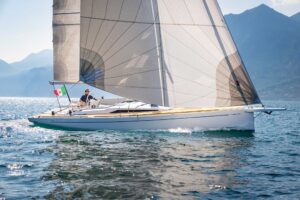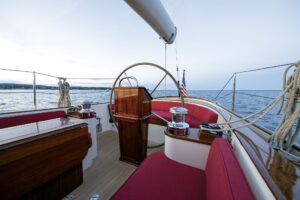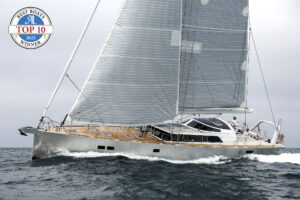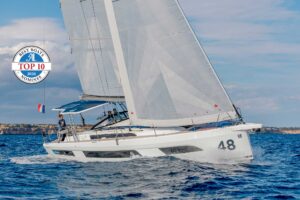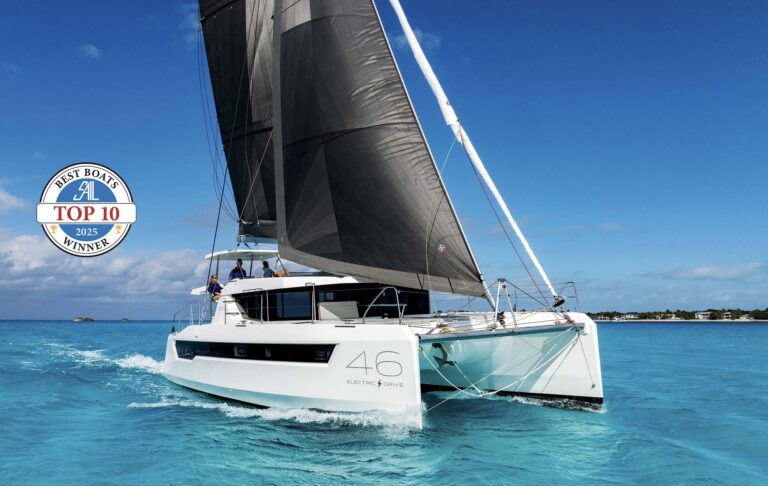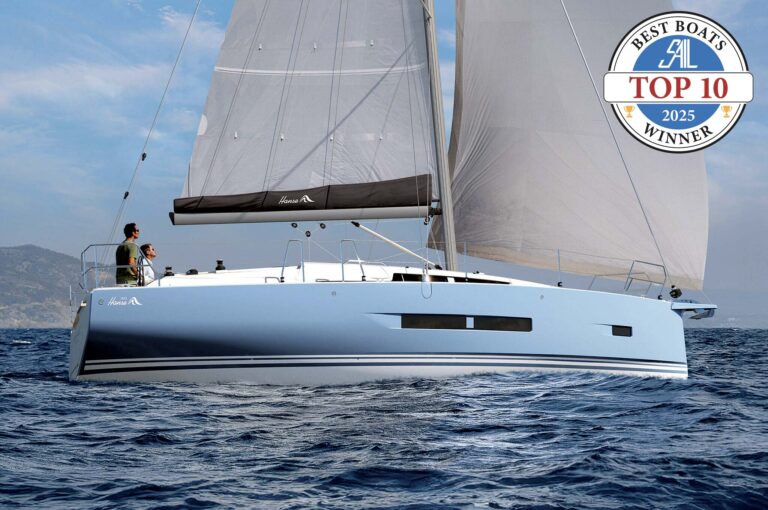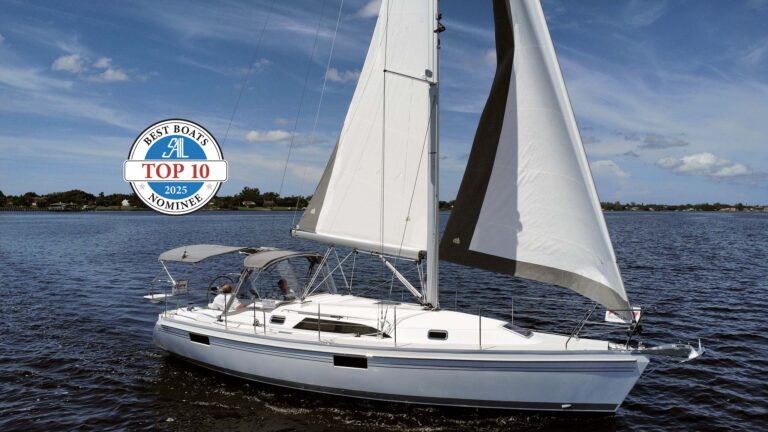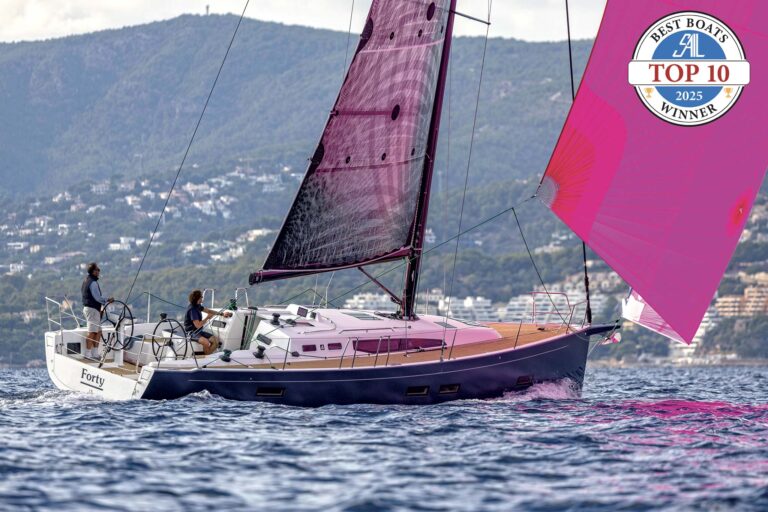It’s a good bet that Starling Burgess, when drawing the lines for his 1934 America’s Cup defender Rainbow, never imagined that a new Rainbow would be almost ready to launch 77 years later. Or that a new version of his 1937 defender, Ranger, would be already sailing. But the J Class represents the epitome of beauty and elegance under sail, and because of that, the Js are back. Six J Class yachts are on the water—three restorations and three replicas—with five new boats in-build and a sixth in-talk. If all are completed and launched, the fleet of 12 will be larger than the original fleet of 10 built between 1930 and 1937. Call it a testament to tradition at a time when the America’s Cup is turning in new directions.
Elizabeth Meyer, the guiding light behind the International Yacht Restoration School (IYRS) in Newport, Rhode Island, sparked the J revival in the 1980s with a restoration of Endeavour, that deserves to be called heroic. Just a few years before she took it on, Endeavour’s tired hulk had been sold for a token 10 pounds. When the Lipton Tea company bought Shamrock V and then turned that boat over to IYRS as well, the revival was under way.
So let’s recap: Shamrock V was the first J, and it is the only one still sailing built of wood. It was also tea magnate Thomas Lipton’s last America’s Cup challenger. After losing his fifth Cup match, Lipton sold the boat to T.O.M. Sopwith, who used her as a development platform for Endeavour, which gave Harold Vanderbilt, Rainbow and the New York Yacht Club a scare by winning the first two races of the 1934 America’s Cup. Is there history here or what? And with new Js joining the ranks, the class is back to making history, not just being history.
J Class replicas include modern versions of the last two Js to compete for the Cup, Ranger and Endeavour II. (John Williams has been sailing his new Ranger since 2003; the new version of Endeavour II is Hanuman, which software entrepreneur Jim Clark has been sailing since 2009). Another Ranger derivation, Lionheart, was launched in July of 2010 from the Bloemsma Shipyard in Makkum, the Netherlands, which is action-central for these big boats. Bloemsma has also completed the hulls for the replica Rainbow, now being finished at another facility, and for the first-ever Swedish J, Svea, based on a 1937 Tore Holm design that was never built. Svea is likely to be sailing this year. Rainbow is due soon too.
These “replicas” are modern boats in traditional guise, more seaworthy and more durable than early Js, which were never built for the long haul. Early builders often mixed metals, placing a boat in a private race against electrolysis before it ever touched the water. The J Class Association (jclassyachts.com), formed in 2000, developed scantlings for aluminum construction. Masts are now carbon, and at heights to 165 feet, this is one area where 2011 technology is far ahead of 1930s technology. The original Js were built to the Universal Rule, developed in 1903 by Nathanael Herreshoff. However, with new hulls based on designs from the day, the rule’s sail area/length/displacement tradeoffs are out of play. Racing is by time allowance based on a velocity prediction program.

